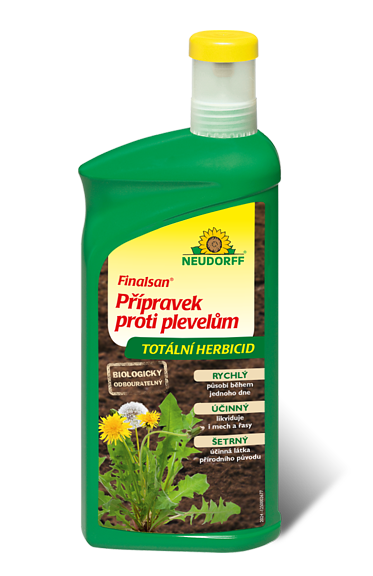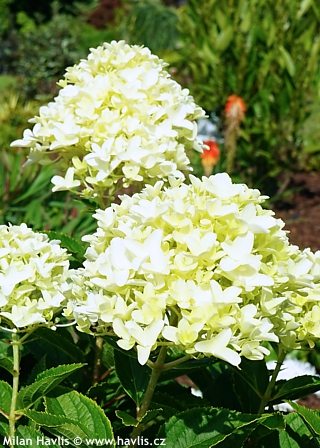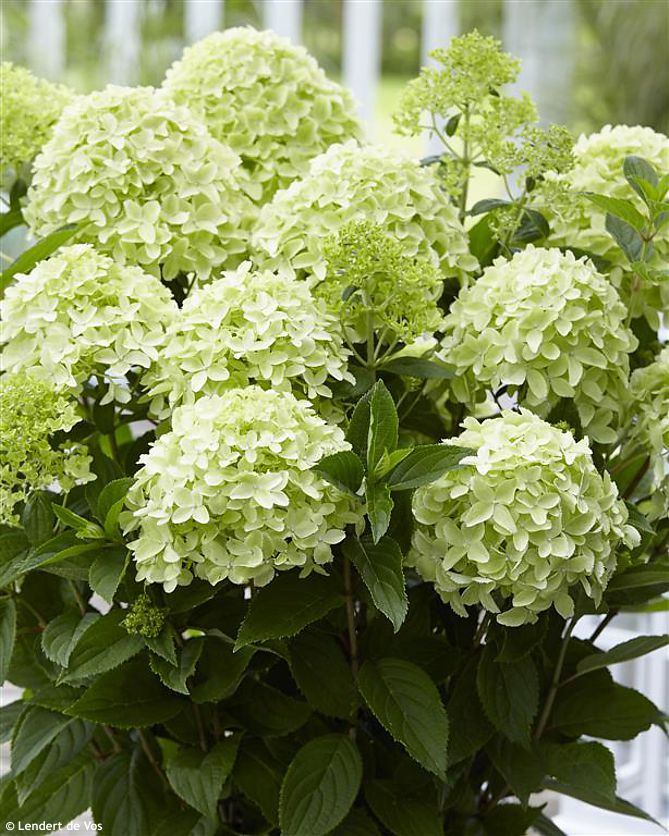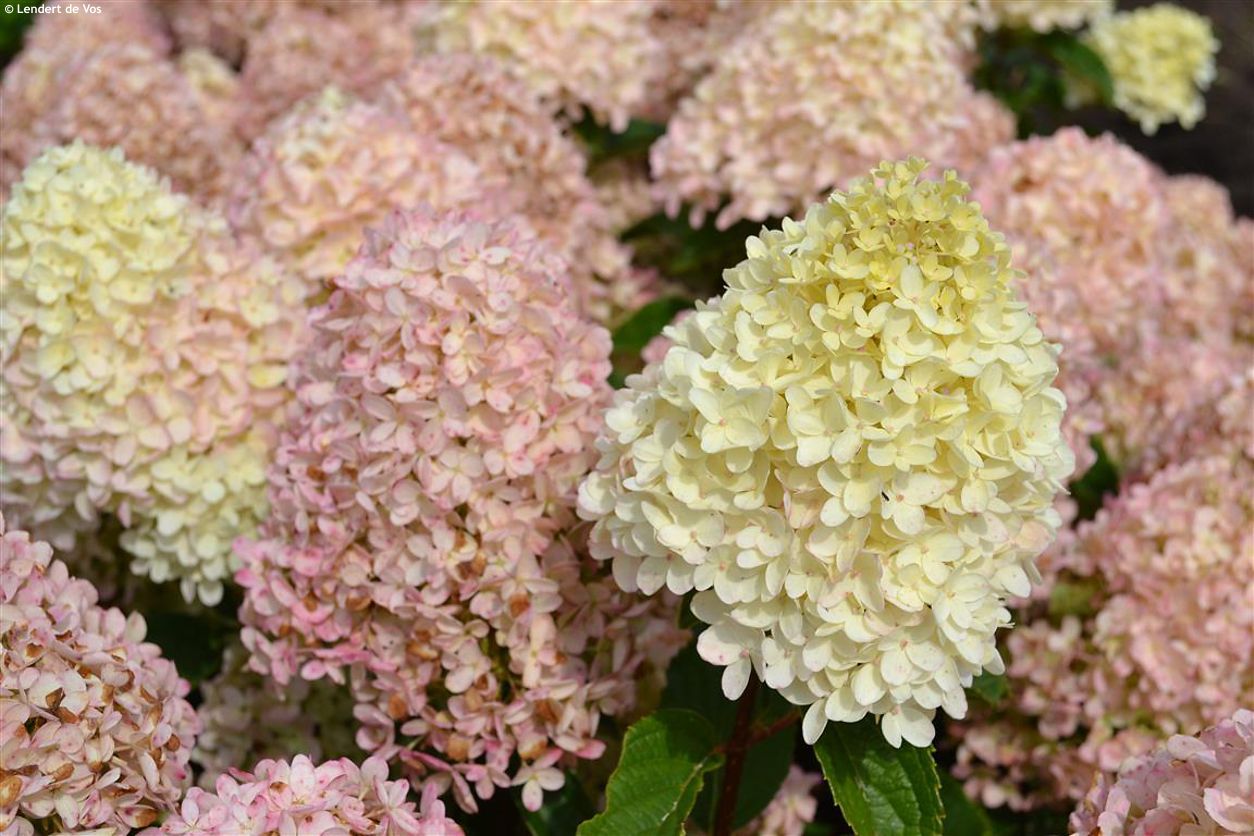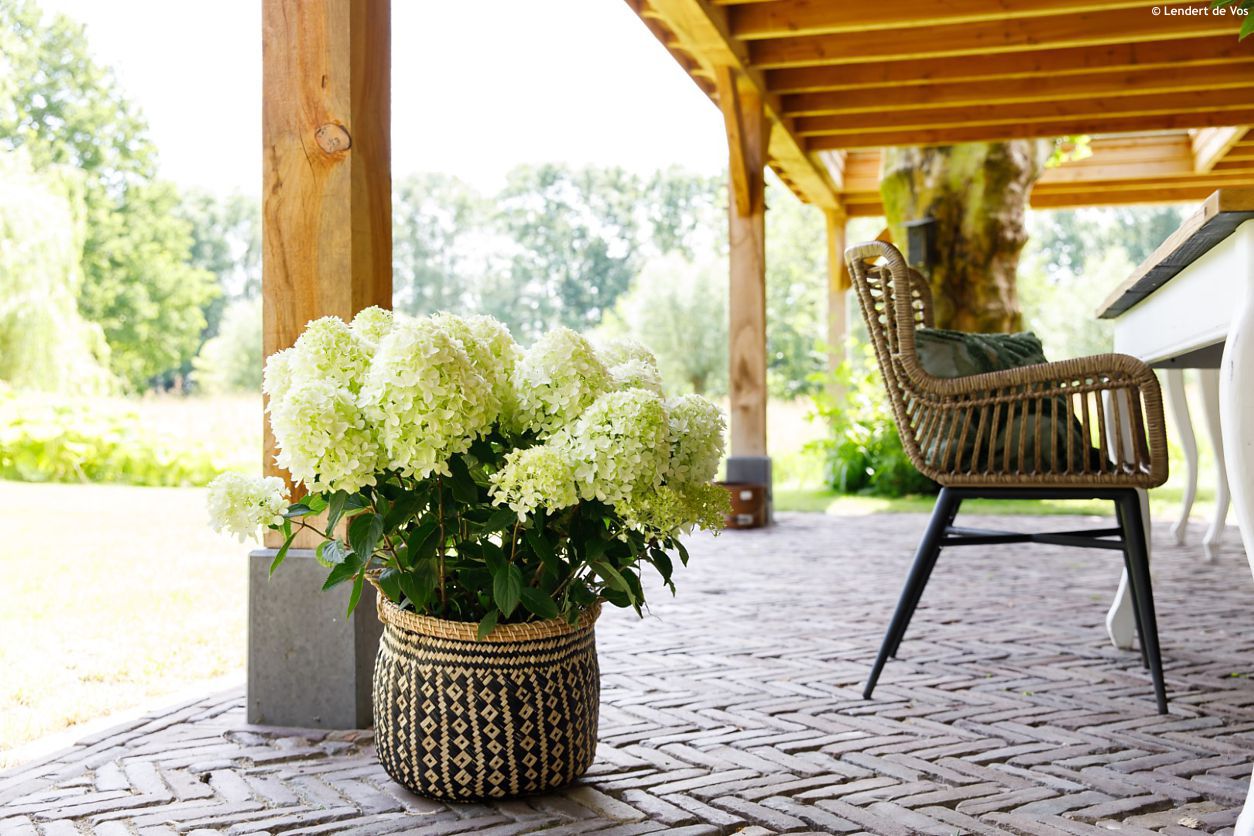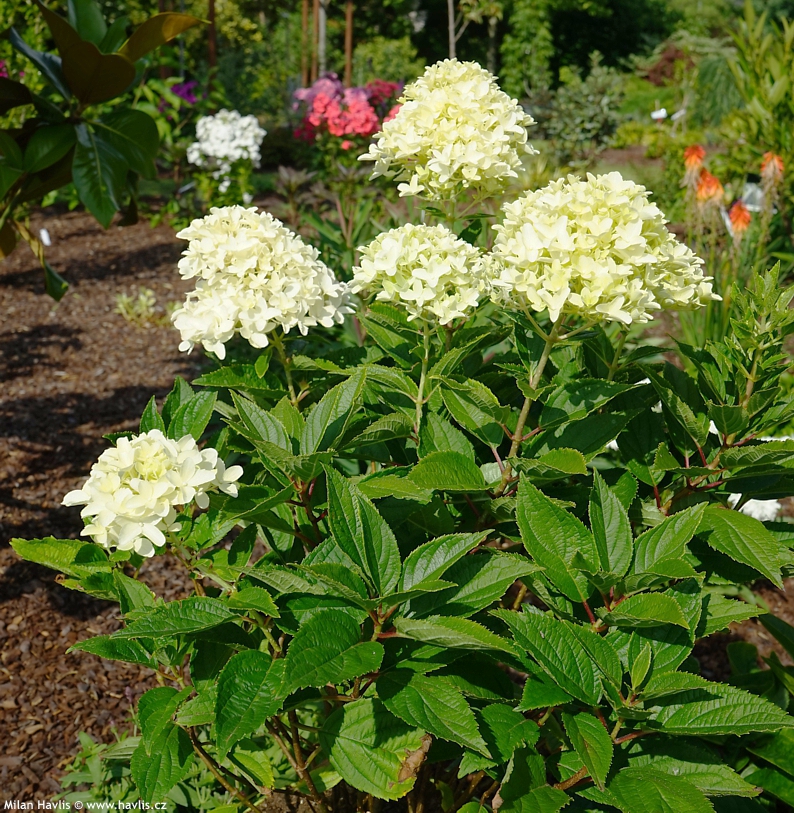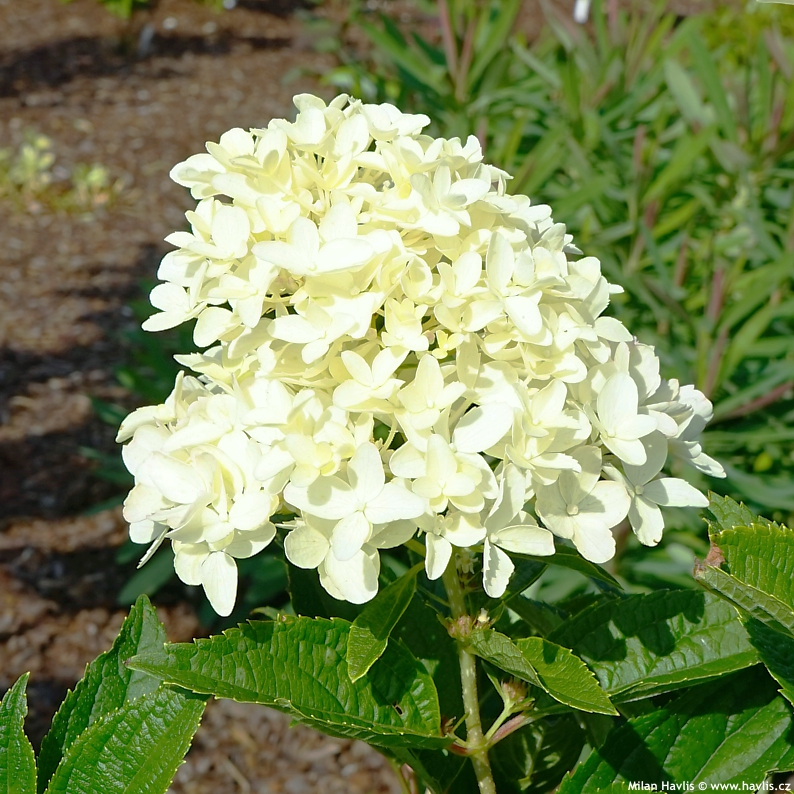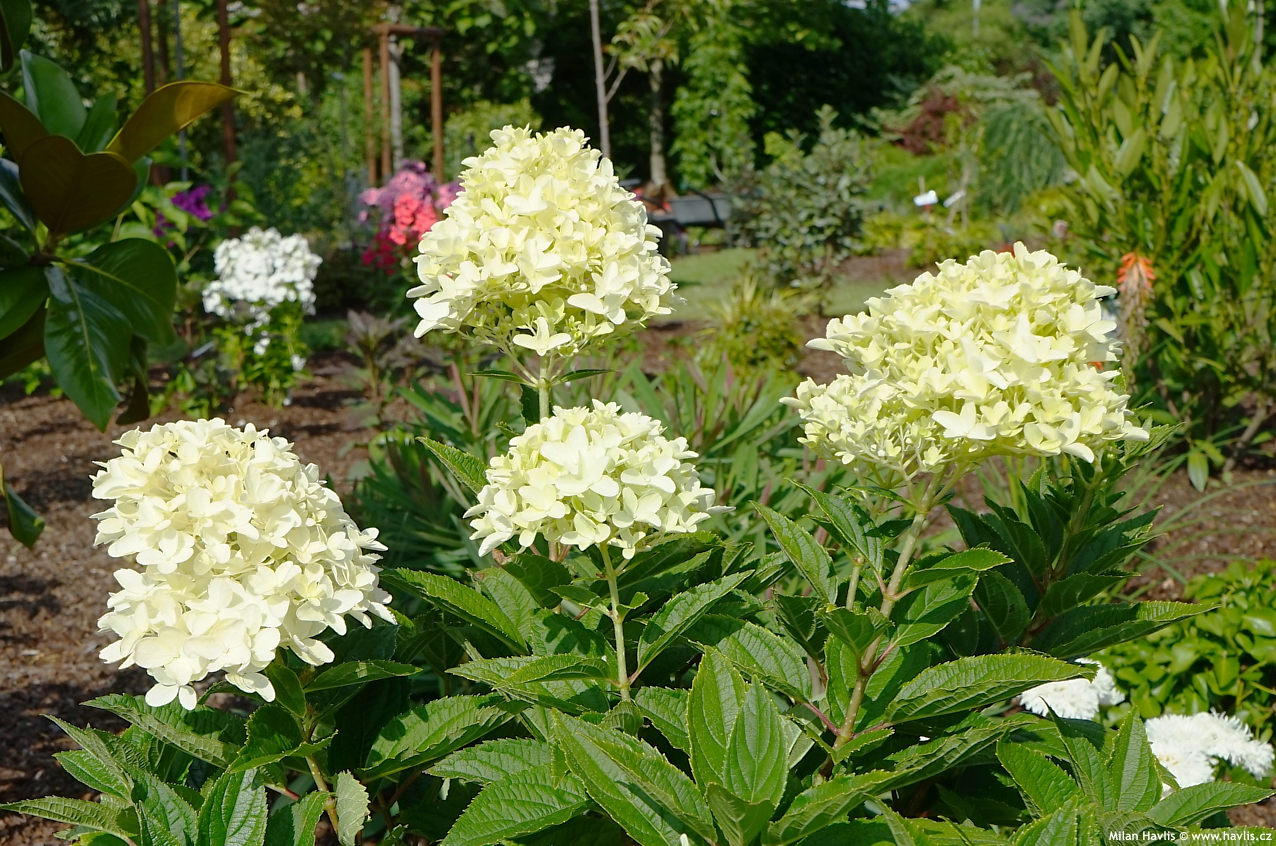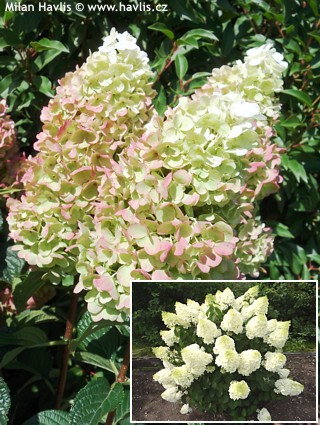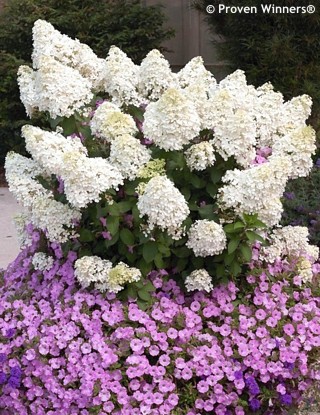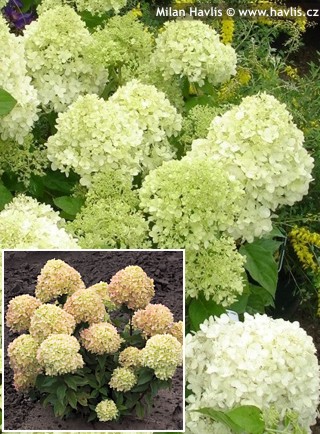Hydrangea paniculata ''Hylv02' WHITELIGHT® panicle hydrangea
Hydrangea
The panicle hydrangea (Hydrangea paniculata) is a deciduous shrub or small tree native to East Asia, naturally occurring in the mountain forests and valleys of China, Korea, Japan, and Russia’s Sakhalin Island. It is distinguished by its strikingly conical panicles composed of small fertile and showy sterile florets, which shift in color over the season from white through pink to wine-red, and by its high tolerance for full sun. The species was botanically described in 1829 by the German physician and botanist Philipp Franz von Siebold (1796–1866), who encountered it during his work in Japan. It reached Europe through botanical collections and expeditions of the 19th century, with the first cultivars such as ‘Grandiflora’ and ‘Floribunda’ spreading in gardens only toward the end of that century.
A milestone in the breeding of Hydrangea paniculata came with the expedition of American dendrologist Charles Sprague Sargent to Japan in 1892. He brought back seeds from which, in the following years, the cultivar ‘Praecox’ was raised—the first documented variety with early flowering. Its beauty was already praised in 1897 in the journal Garden and Forest, and when the plant became established in cultivation, Sargent himself called it in 1922 one of the most beautiful shrubs in the Arnold Arboretum. The original specimen still grows there today as a living botanical monument more than a century old.
WHITELIGHT® is a panicle hydrangea that, from early July, produces medium-sized (12–14 cm long and wide), abundant panicles composed of both small fertile florets and conspicuous sterile ones. These open first in a radiant lime-cream shade, mature to pure white, and by late summer take on only the faintest blush of pink. Against the backdrop of fresh green foliage, their brightness truly illuminates the garden, just as the cultivar name suggests. The deciduous leaves are deep green, ovate, with red petioles. The shrub grows upright, compact, and dense. Plant patent No. PP31237 was granted in 2019.
This cultivar belongs to the Gardenlights® series, which is marketed under the guidance of Nick van Rosmalen’s company BREEDIT, supporting breeders with introductions and licensing. The actual breeder of WHITELIGHT® is Dutch plantsman Lendert de Vos of Kwekerij Lendert de Vos in Reeuwijk. In 2012 he crossed the successful panicle hydrangea ‘Phantom’ with an unnamed selection, creating a novelty aptly named WHITELIGHT®. In the same year it was awarded a gold medal at the international Plantarium trade fair and soon became the cornerstone of the entire series. U.S. Plant Patent PP31237 was officially granted in 2019.
In the garden, WHITELIGHT® can be used as a small specimen shrub, where its dazzling white panicles act like a spotlight in the green space. An even stronger effect is achieved in combination with plants that highlight its purity through contrasting colors: placed between the dark-leaved elder ‘Black Lace’ on one side and a violet or purple veronica on the other, its flowers step forward with dramatic intensity while allowing its companions to shine as well. Classic pairings include moisture-loving grasses—tufted hair grass (Deschampsia), purple moor grass (Molinia), reed grass (Calamagrostis), or switchgrass (Panicum)—whose airy panicles lend the composition lightness. And for an extra play of color, add rudbeckias or knotweeds (Persicaria), which in the second half of the season blaze in golden or red tones.
Panicle hydrangeas grow best in full sun, though they also tolerate partial shade and even shade, where they flower somewhat later. They are not overly demanding in soil type, but in fertile, well-drained ground they are at their finest. Once established, they cope well with summer drought, though they remain healthier in evenly moist soil. They respond very well to fertilization, producing larger flowers and stronger growth. They tolerate any exposure and a wide range of soil pH. Each spring before bud break, the shrub should be pruned back by about two-thirds, leaving a sturdy framework of several strong shoots. From these, new vigorous stems will grow, carrying large panicles—the plant flowers on new wood. Hardy to at least –34 °C (USDA zone 4), it is also suitable for outdoor containers.
Last update 12-07-2021; 16-10-2025
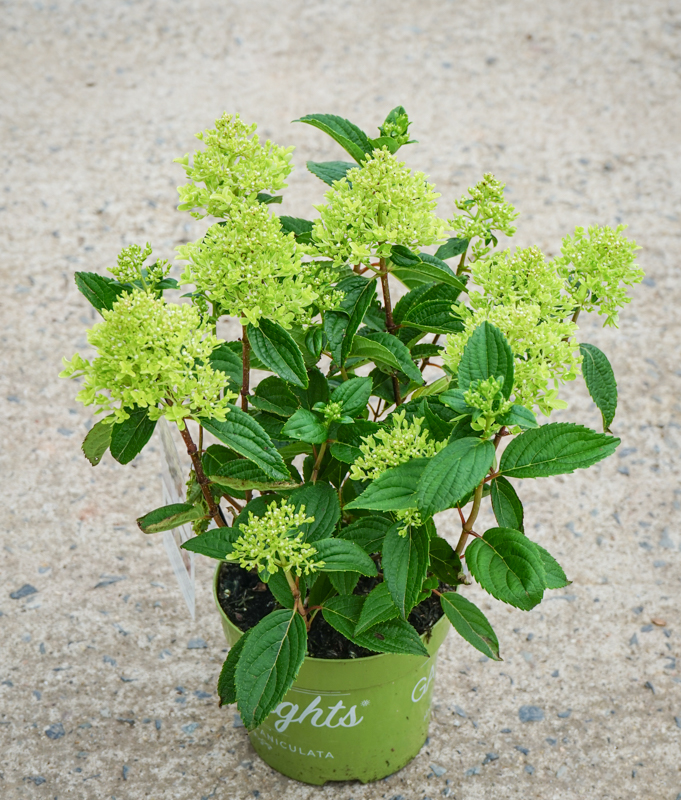
374 Kč

374 Kč
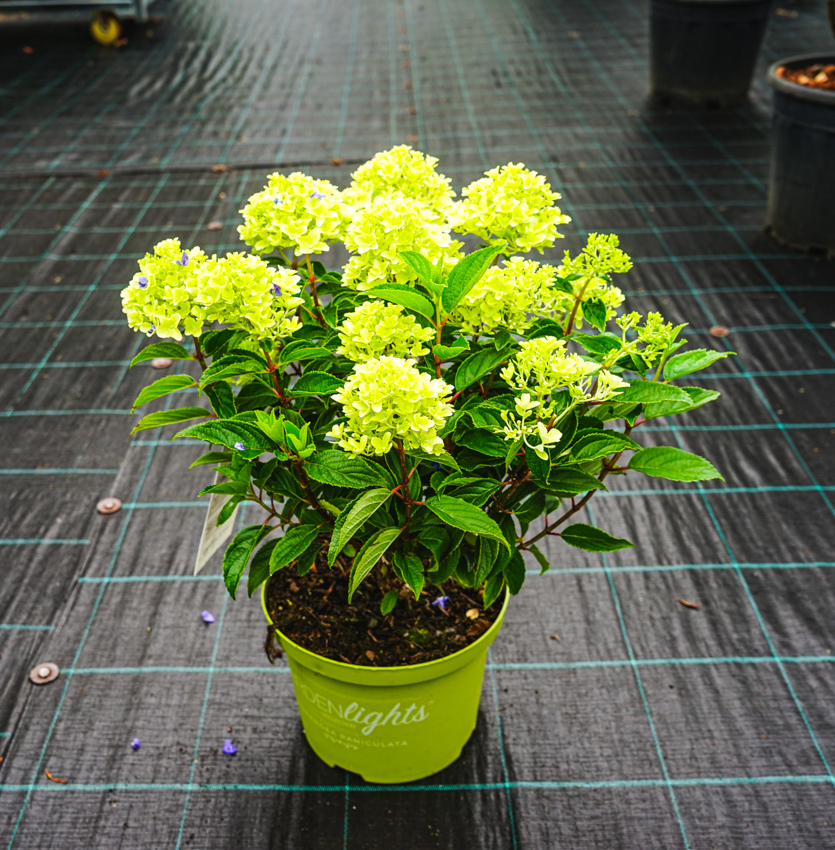
845,75 Kč
Goods are shipped all over Europe. For Russia and U.K. and for further details please read about SHIPPING OPTIONS HERE.
Are you interested in a serious discount for orders NOV-FEB? Check your options here.
THE PRICES INCLUDE VAT of 15%. For quick conversion you can use 1 CZK = approx. 0.04 EUR
- STANDARD QUALITY - Plants of this group are 1st class quality with number of branches and overall density adequate to their size and age, considering they were container grown.
- DE LUXE QUALITY - This label guarantees a luxurious quality of manually selected plants that, compared to their height and age, are exceptionally dense and beautiful.
- EXTRA - These plants are usually mature and bigger specimens with exceptional overall appearance.
- STANDARD (as described in the plant form) means a tree with a trunk of 190-210 cm and a crown at the top, unless specified differently. The commercial size for trees is their girth measured in the height of 1m from ground.
- HOBBY - These plants are of the same quality as our standard-quality plants but younger and therefore cheaper.
- SHRUB - a woody plant with branches growing bushy from the ground level.
- HALF-STANDARD or MINI-STANDARD - a small tree with shorter trunk, its size is usually specified.
- FEATHERED - These are trees with branches growing already from the base of the trunk and up along the stem.
- GRASSES and PERENNIALS - Sizes given usually read the diameter of the pot or the clump, as specified.






























